Autumn abundance
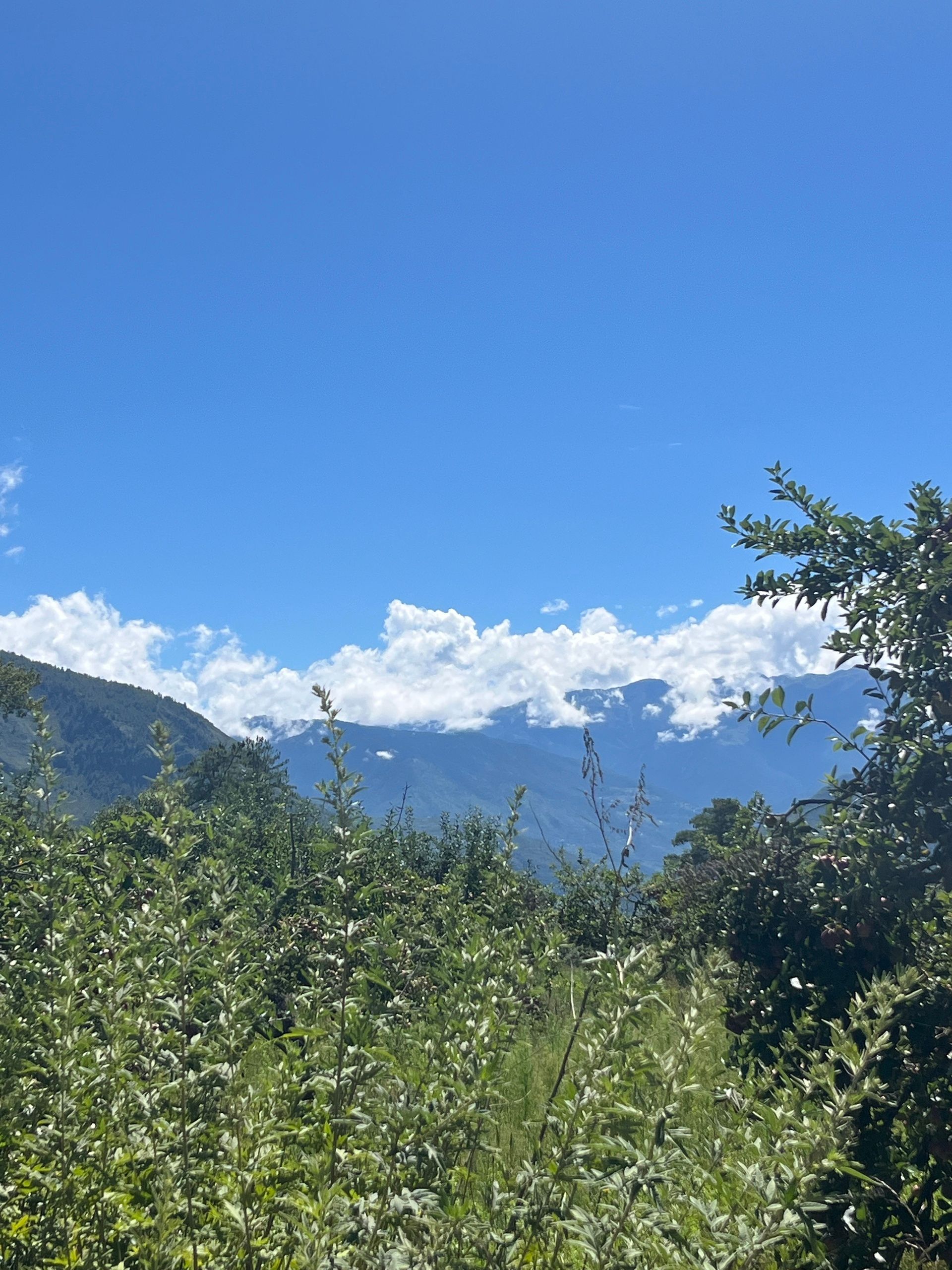
Heading out on a bluebird day above Paro valley, western Bhutan
Kuzu zampo la, y’all!
A group of five – down from nine last week – plus intrepid baby Keysang who never seems to tire of being carried, gathered to hike to a Lhakhang (temple) Saturday morning.
Given the group’s composition, we were quickly self-dubbed Women vs. Wilderness as we set off on a route that was unclear and often overgrown (yes, foreshadowing).
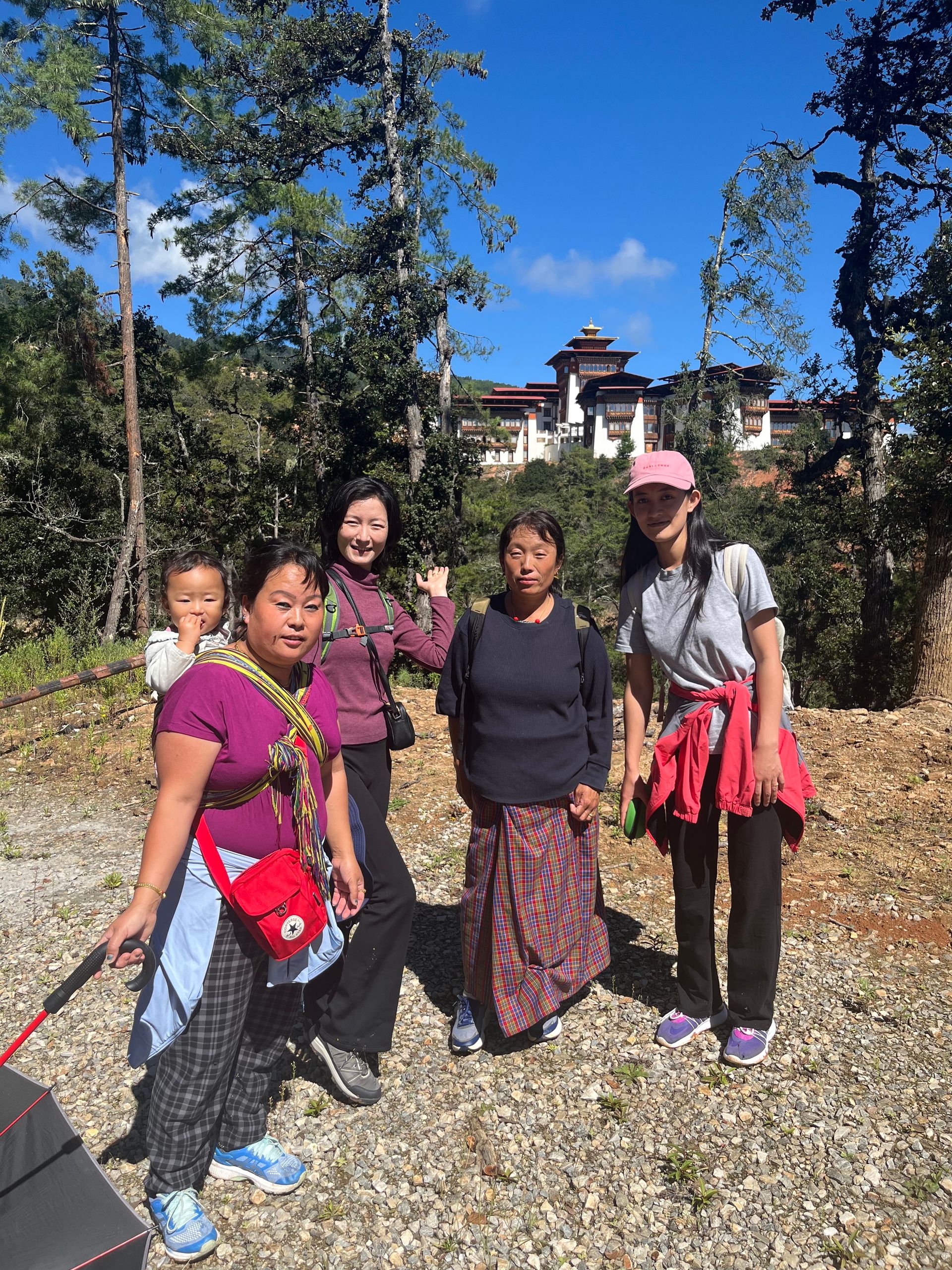
Women vs. Wilderness looking fresh and clean at the beginning of our hike, with the back of JSW School of Law behind
In the sparkling Himalayan morning, following torrential monsoon rains of the previous afternoon (take a listen at the link), everything was washed clean; the air, crystal clear.
The hills on the opposite site of the valley seemed close enough to touch. The brilliant bluebird morning made anything possible.
Earth herself seemed to welcome us with abundant wild berries — a constant source of energy for the hikers and a delight for the baby.

Harvesting the abundant sweet and sour berries for hiking snacks.
Guidance from a Khenpo
After following an abandoned farm road uphill behind JSW School of Law, we soon reached an abundant apple orchard adjacent to a huge home and an enormous sacred tsenden tree, attesting to a prosperous and spiritual household. The tsenden, or Cupressus cashmeriana — aka Bhutan cypress, or weeping cypress — is thought to have grown up where Guru Rinpoche planted his walking stick in the ground.
Crumbling rammed earth walls sheltered a red striped chorten (white-washed monument with sacred relics inside), further indication of the prosperity and religious importance of the household.
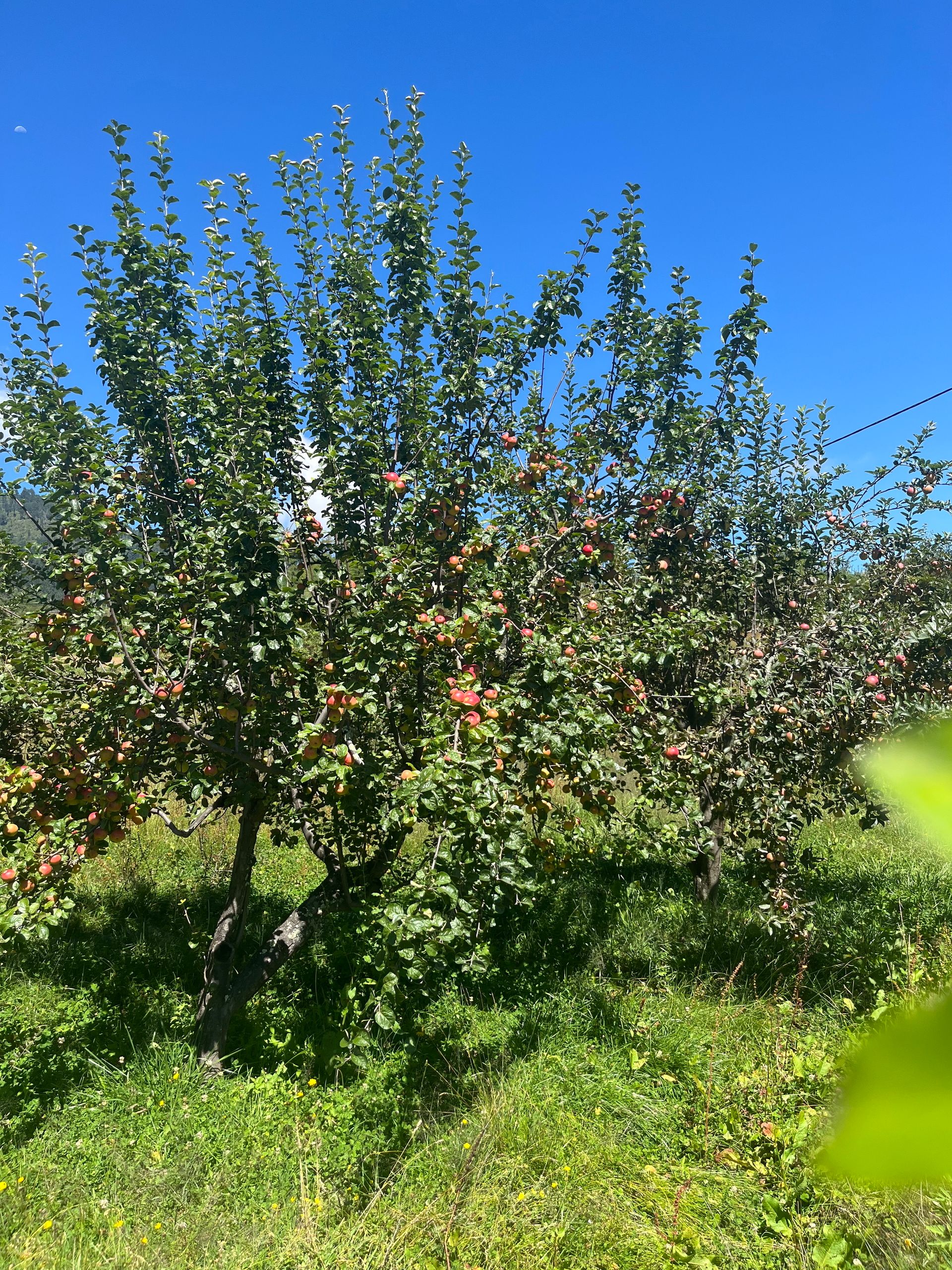
Autumn’s apple bounty
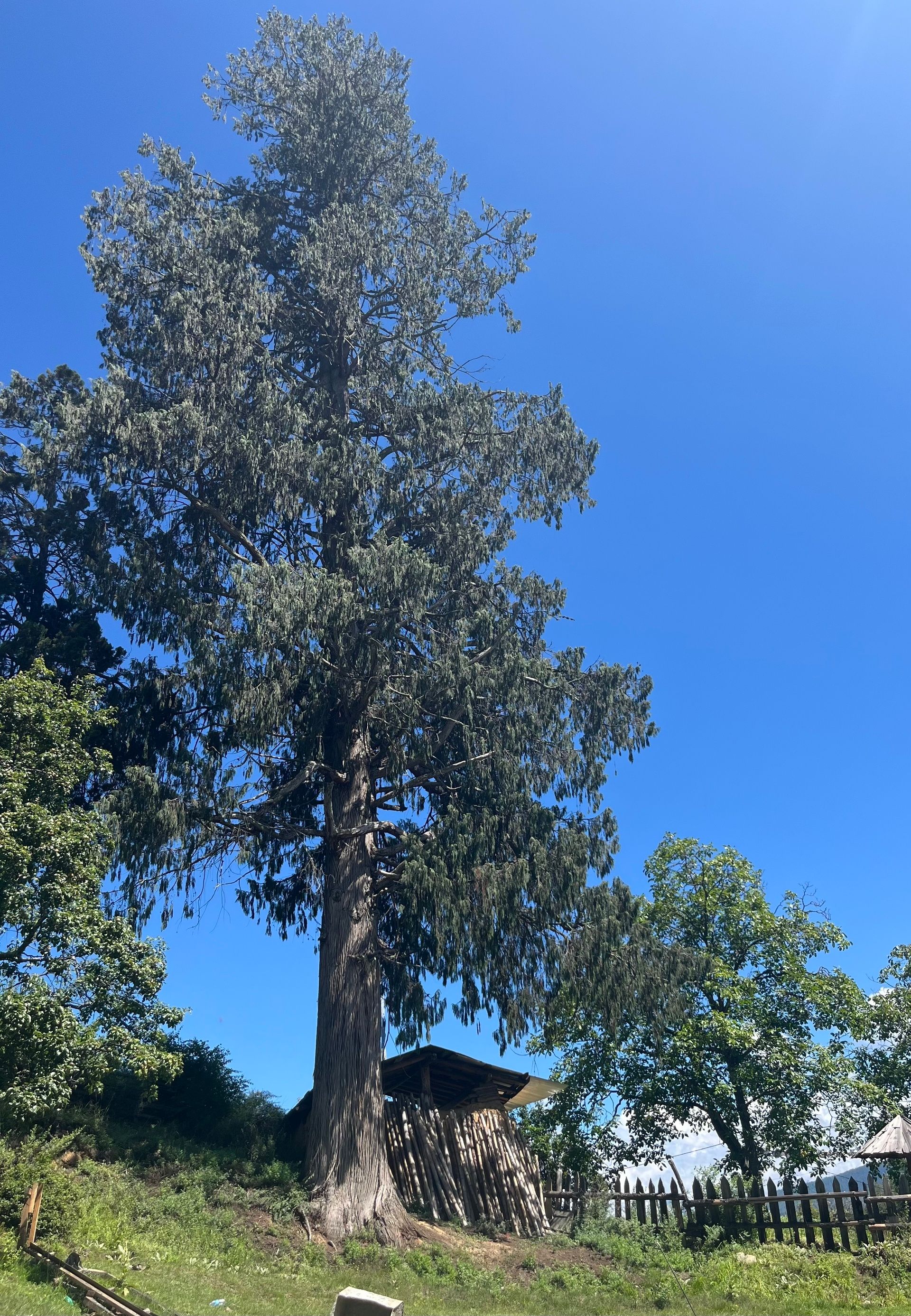
Sacred tsenden tree, often a marker for a temple, monastery, or sacred site
We stopped to ask directions from the homeowner working outside the house, whom my friends later referred to as a Khenpo — a learned monk or religious teacher. The practice of consulting locals and other trekkers for directions is one I recalled from trekking in Nepal and eastern Bhutan: unclear routes require frequent confirmation. Much of the Himalayan landscape is a human-imbricated working landscape, lively with agricultural fields, community forests, wandering cows, and orchards.
Extensive conversation and gesturing indicated the way. We asked the Khenpo to call off his fierce black and tan Bhutanese mastiff dog so we could pass, and quickly rinsed our sweaty faces in a spout connected to a clear, flowing stream.
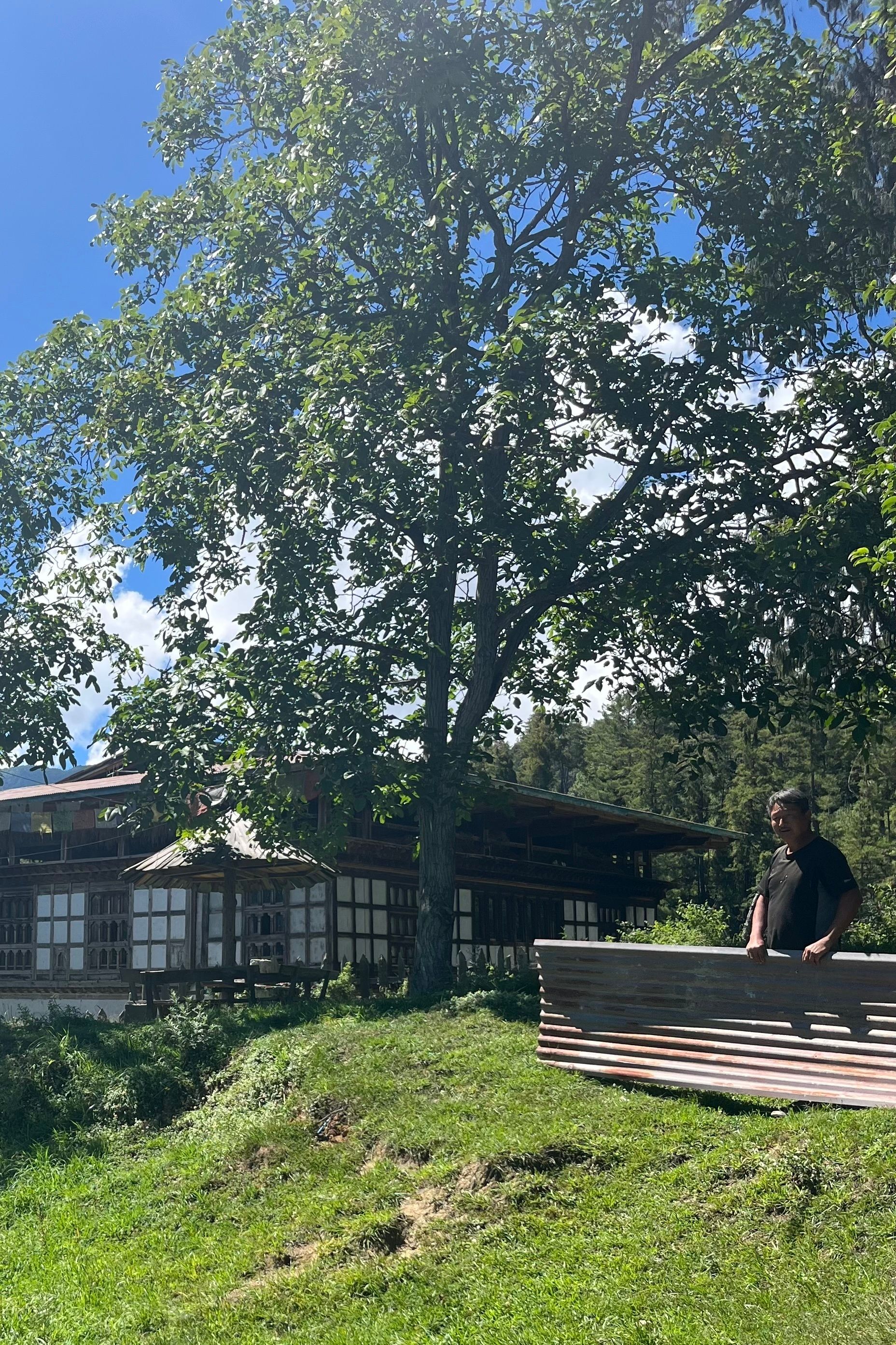
Asking directions to the Lhakhang at a prosperous farmhouse along the way
Wayfinding
Once we left the homestead, however, the way became much less clear. A single track trail lead through fields of shoulder-high artemisia, a wild medicinal herb growing abundantly in Bhutan, and likely contributing to its archaic name Men Yul, or Land of Medicinal Herbs.
Artemisia bhutanica and Artemisia vulgaris are common medicinal herbs made into a tincture for headaches and colds. Artemisia is also used to relieve aches and pains in the traditional scented hot stone baths, in which river stones are heated in the fire for hours and then placed at one end of a filled wooden tub, separated from the bather by a wooden grate. (A few weeks ago, Eric and I learned that warm, humid August is not really the time when you need a hot stone bath, but we still enjoyed ours at Tshering Farm House in Paro).
The field of artemisia eventually opened into a clearing, after which the trail plunged into the brush, and past abandoned rammed earth houses and fields again, where it petered out. Houses may be abandoned because of rural to urban migration, migration overseas, or death of the elder generation.
We backtracked to return to the clearing and took an alternate path, following an overgrown farm road which appeared to curve up toward the direction we needed to go. My friends were delighted to see wild pepper berries hanging over the road, just as we’d encountered on last week’s hike, and harvested a bag for cooking. This seemed as auspicious sign, as did the quality of the trail which matched the "rough road” description the Khenpo at the farmhouse had provided.
However, climbing led us to another dead end at a tall chain-link fence. There appeared no other option than to follow the fence, which marked the boundary of the Druk Gyalpo’s Institute, a selective holistic high school initiated by His Majesty the Fifth King.
DGI is our nearby educational neighbor in the hills of Pangbisa. Scrambling along the fence line delivered us to the road in front of the Druk Gyalpo’s Institute, a spot we could’ve reached by walking on the road less for less than an hour.
After hours of wayfinding and bushwhacking, we had essentially completed three-quarters of a circumambulation around Pangbisa. A religious circumambulation, in which the pilgrim moves clockwise around a sacred site or object, with the right hand closer to the sacred object, is known as a kora. Moving clockwise around Pangbisa, we had completed a partial kora.
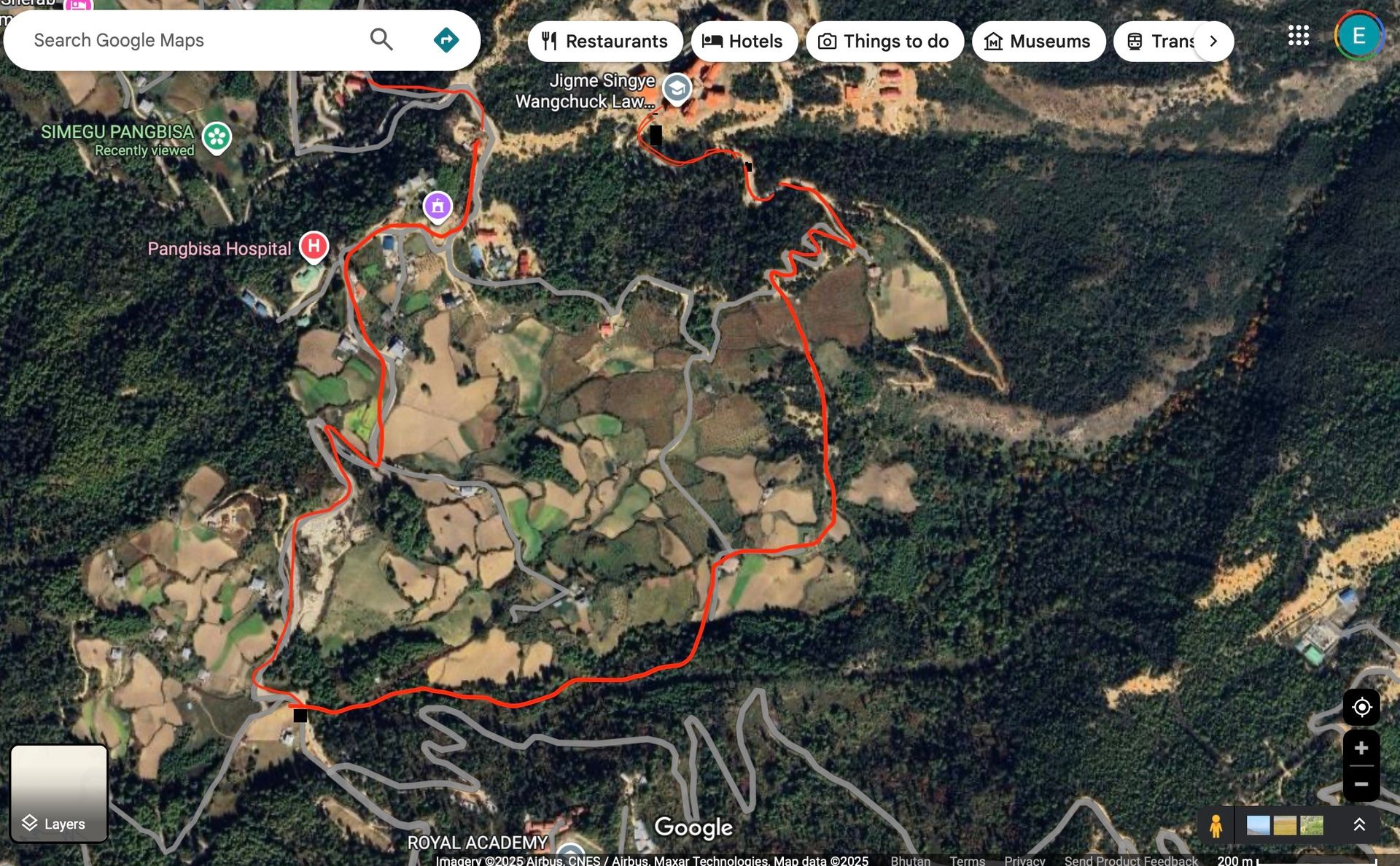
Near as I can figure, the route from JSW to the fence line of DGI, and back to JSW on the road.
Ask and you shall receive
While the lhakhang’s location remained elusive after more nearly three hours of wayfinding, a nearby shop beckoned with ice cream, snacks, and cold drinks.
We settled in the shade for a picnic that included delicious, deep-fried chili peppers (like jalapeño poppers without the cheese filling), tsampa balls (a traditional Tibetan dough made with roasted grain flour mixed with butter, and in this case, honey and cashews), tangerines, hardboiled eggs, and chips from the shop.
Tongue loosened by the strong Bhutanese beer and the high elevation, I raised a query that had nagged me since my return: could arra, the homebrewed alcohol, reminiscent of sake, so plentiful in eastern Bhutan, be found in the west?
Indeed, the sister visiting from Trongsa in central Bhutan has brought some arra, which I was welcome to sample!
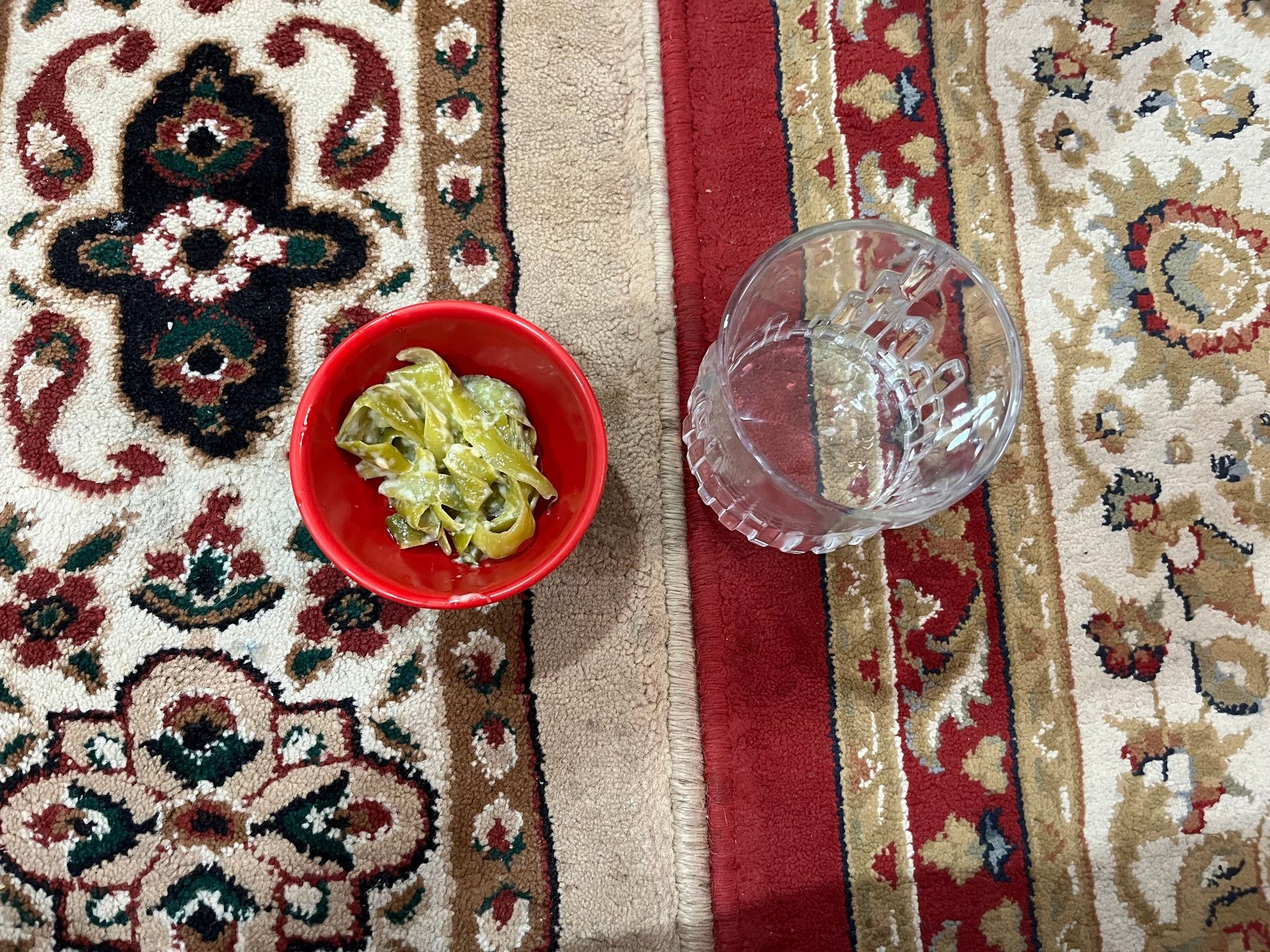
A snacking curry made with a green squash called crow’s beak (or olochoto) and cheese, next to a glass of clear arra. Crow’s beak has a mild flavor, similar to other summer squashes.
TikTok
As is common with language learners, the visiting sister became more confident in her English after a few drinks (my Dzongkha has not yet at this point…) and decided we must make a TikTok in which she would lip-synch to a song that basically says, as far as I understand, “the more I drink, the better English I speak.”
Though the hike had not led to the planned destination, friendship and conviviality flourished.
In Bhutan, I find a looser grip on specific outcomes and a greater sense that the emergent future is just as elusive and unknown as the unnamed Lhakhang.
Had we reached our planned destination, I might not have had the chance to taste the homemade arra or appear in my first TikTok.
May you set bold intentions and hold your connection to them loosely,
Tashi delek!
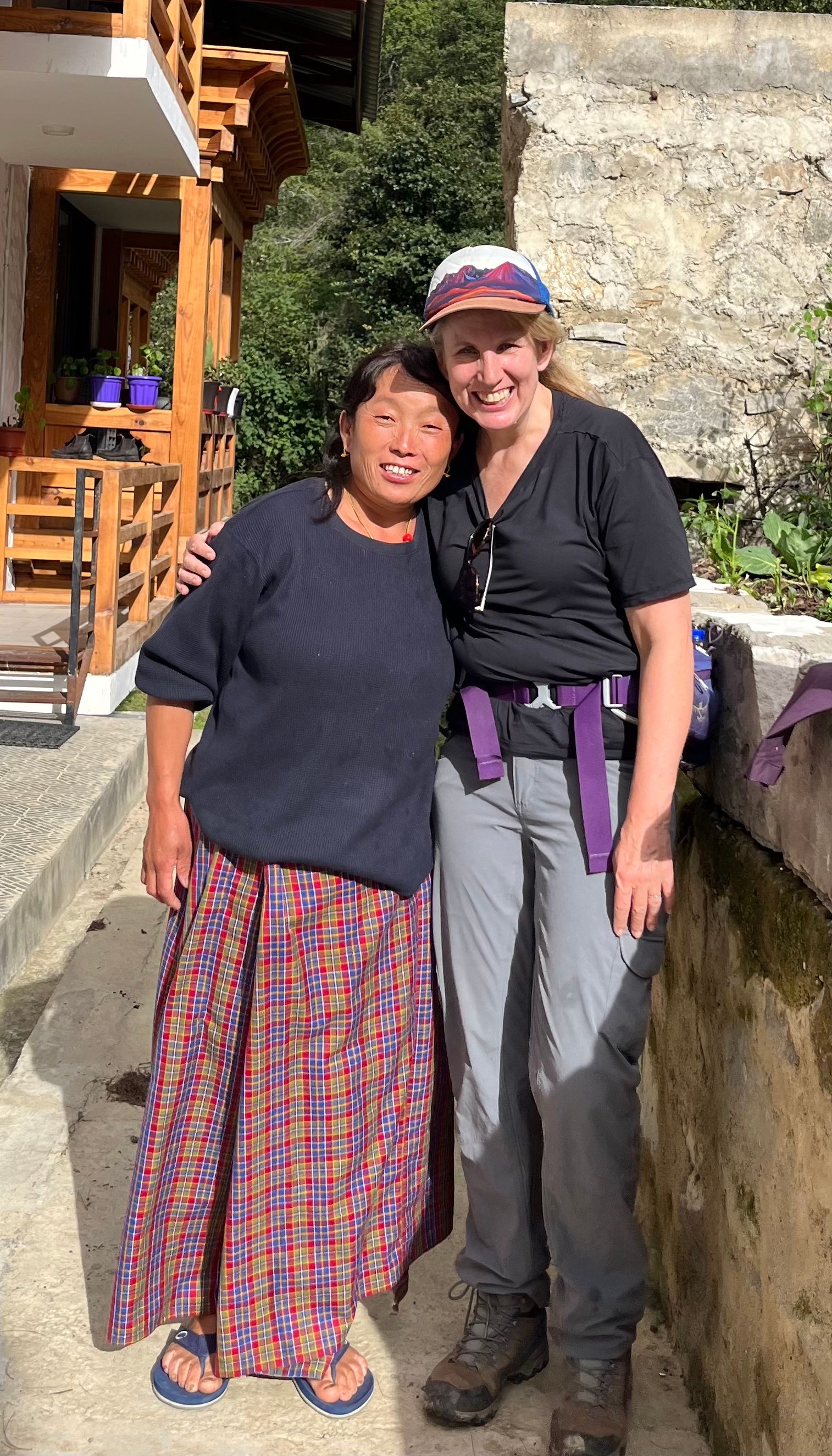
With the visiting sister from Trongsa in central Bhutan, who has promised we will meet whenever she’s in Paro
